The government of Indonesia still remain ambitious to achieve the renewable energy mix target up to 23 percent in 2025 and 31 percent by 2050. However, this ambition of national energy mix target is planned to be lowered in accordance to the Draft of Government Regulation on National Energy Policy (RPP KEN) which has currently entering the harmonization stage by the House of Representative (DPR) together with the Ministry of Energy and Mineral Resources (ESDM).
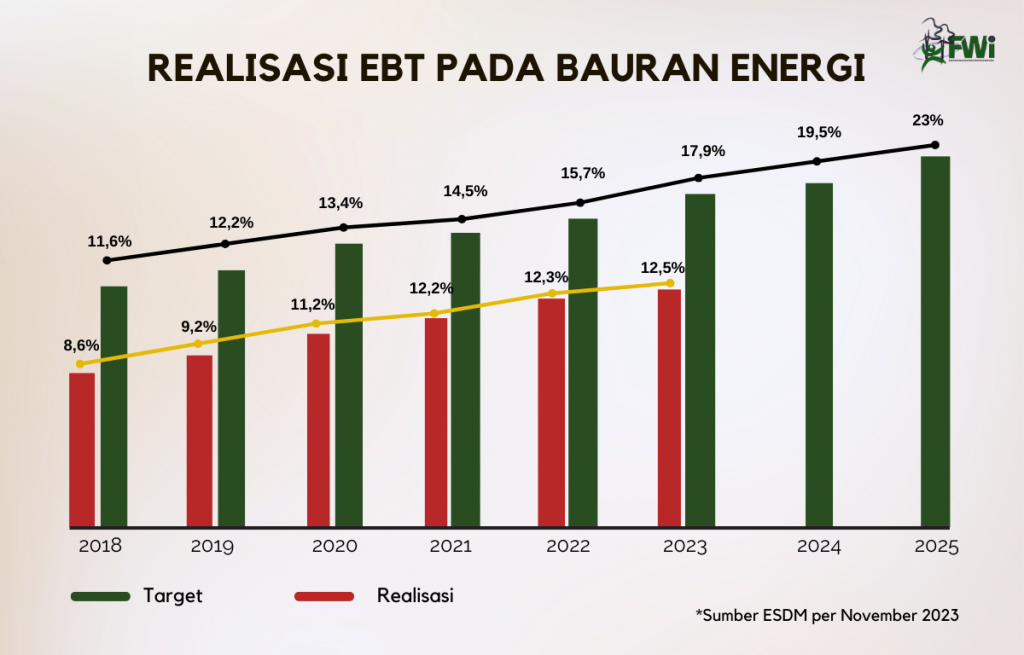
The realization of Indonesia’s energy mix target is still lagging behind from the set targets. The increase trend from 2018 until 2022 has been very insignificant. The realization of new and renewable energy (NRE) remains far from expectations. In 2023, the realization of NRE only reached 12.5 percent, far from the target of 17.9 percent. The achievement from 2021 to 2022 was 0.1 percent, and from 2022 to 2023 was 0.2 percent. It is estimated that Indonesia will fail to reach the 23 percent energy mix target by 2025 due to a gap of approximately 10 percent.
The energy mix target is set to be reduced to 19 to 22 percent by 2025, as mentioned in the Draft National Energy Plan (RPP KEN). To boost the achievement of the national energy mix, biomass is positioned as the second priority after solar energy.
The utilization of biomass as a renewable energy source is outlined in the Draft Government Regulation on the National Energy Policy (RPP KEN), which is currently entering the harmonization stage ahead of approval. Additionally, the utilization of biomass/bioenergy is also included in the Draft Law on New and Renewable Energy (RUU EBET) as a renewable energy cluster.
Solar energy is identified as the primary priority in the energy mix target due to its significant potential and lower environmental impact. Meanwhile, why biomass still remain as a priority, even to be the second choice for renewable energy sources despite its current implementation is done in a somewhat reckless way?
Biomass utilization, which are wood, processed wood, and including agricultural waste, is claimed to be a renewable energy source capable of replacing fossil coal during this transition era. This claim is based on the asumption of high biomass potential from Indonesia’s vast timber and palm oil plantations, as one of the the largest in the world. In 2019, the area of timber plantations or industrial timber forests (HTI) in Indonesia reached 5 million hectares. In contrast, palm oil plantations cover a much larger area, totaling 15,303,368 hectares in 2023. Not to mention, this asumption of potential is further added by the Social Forestry Program’s coverage of 7.08 million hectares by 2024. This of course presents a promising prospect for policymakers that Indonesia could achieve energy independence through biomass utilization.
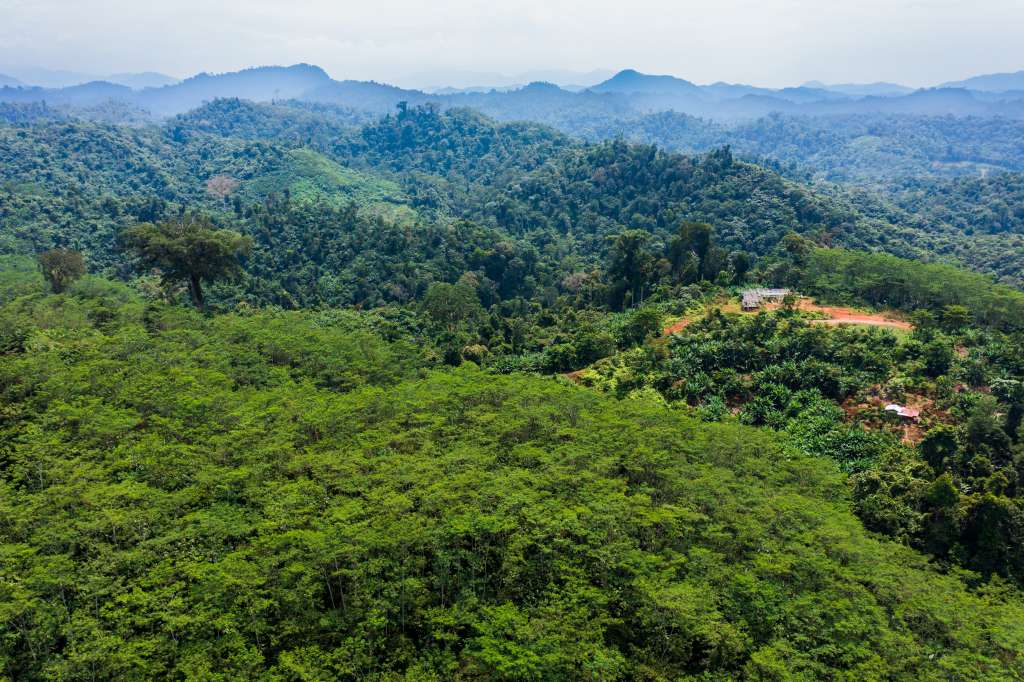
The thing is, biomass derived from timber plantations, industrial timber forests, energy forests, palm oil plantations, and even industrial waste such as palm kernel and sawdust, is indeed a high-value commodity. It is no longer just untapped potential or low-value waste. In fact, palm oil industry waste (kernel) and processed sawdust in the form of wood pellets are now export commodities.
It is not surprising that the achievement of the energy mix is very low due to the higher constellation of problems associated with biomass compared to the development of other renewable energies. Laden with the interests of business actors in forestry companies, palm oil plantations, and coal industries, who are suspected of influencing national energy mix policies, are a contributing factor.
Biomass, with its specific interests in becoming a renewable energy source, will be used by PLN (State Electricity Company) as a substitute for coal, accounting for 5 to 10 percent in 52 coal-fired power plants (PLTU) in Indonesia. According to the PLN General Plan for Electricity Supply (RUPTL), PLN plans to utilize biomass from rice husks, palm kernel, sawdust, wood pellets, and wood chips to replace coal. PLN will then claim this step as part of their initiative as an effort to reduce emissions from the energy sector and actively participate in the free carbon market by successfully decreasing coal consumption.
Information asymmetry remains a significant issue in the implementation of biomass utilization as a renewable energy source in Indonesia. This issue will face a harsh reality. Actors, policies, and the implementation of biomass projects are still predominantly influenced by business interests. Biomass projects as a renewable energy source are far from what is expected. They do not address issues related to climate change, emission reduction, or the national energy mix.
The utilization of biomass has faced sharp criticism from various civil society organizations. Biomass is considered an inappropriate source of renewable energy in Indonesia.
The Reckless Co-firing by PLN
Co-firing, as claimed by PLN, has been tested at several power plants in Indonesia. This includes the use of waste pellets at the Jeranjang and Lontar power plants. Wood pellets have been utilized at the Paiton 1&2, Indramayu, Rembang, Ropa, and Adipala power plants. Wood chips have been used at the Anggrek, Bolok, Tembilahan, and Tarahan power plants. Palm kernel has been utilized at the Tenayan, Ketapang, Sanggau, Belitung, Teluk Balikpapan, Nagan Raya, and Sintang power plants. Sawdust has been used at the Pacitan, Paiton 9, Barru, and Labuan power plants. Additionally, rice husks have been used at the Suralaya 1-4 power plants. As of July 2023, PLN claims to have implemented biomass co-firing at 40 power plants, with an ambition to target 52 power plants by 2025.
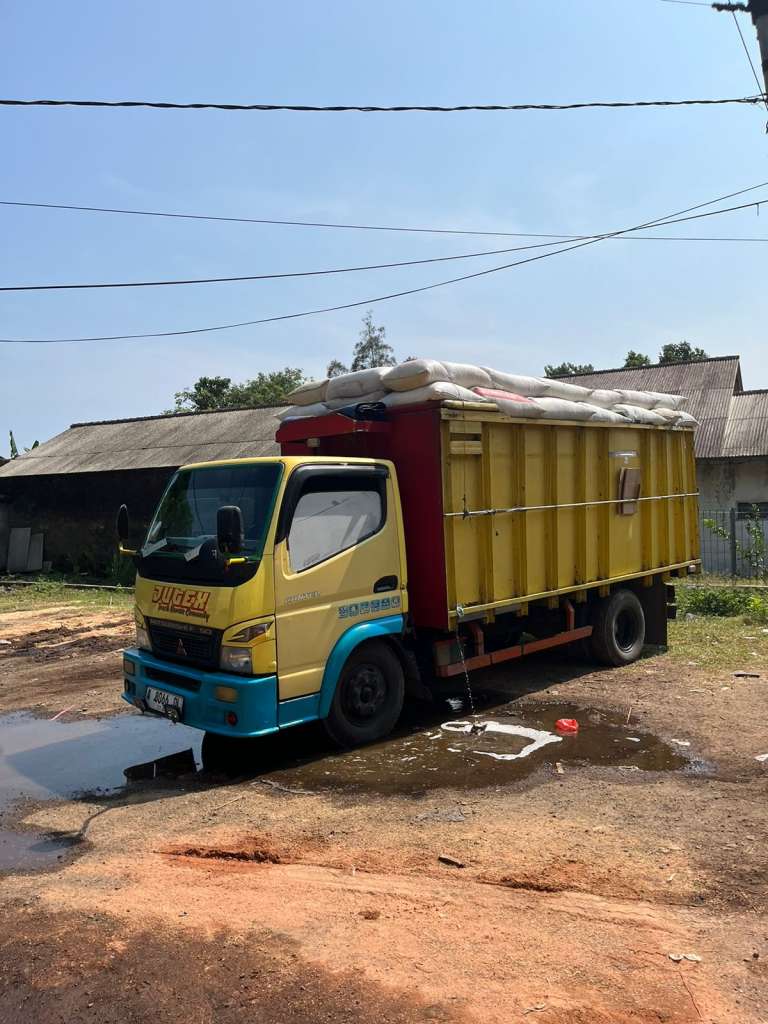
The implementation of co-firing in the field has not been smooth. Co-firing at coal-fired power plants is being carried out inconsistently compared to what was planned in the RUPTL document, as well as the lack of calculation regarding the use of different types of biomass. Additionally, there are strong suspicions of collusion between biomass suppliers and certain PLN officials. Trucks transporting biomass are deliberately soaked with water to increase their weight before entering the power plant area for weighing. Moreover, this “wet” practice is done so that the biomass does not burn up completely immediately.
To deceive public perception, biomass suppliers block the water drainage holes in trucks with soil and cover them with wood chips or husks as camouflage. This practice is certainly detrimental for the nation. It is estimated that the loss could reach 1 to 1.5 billion rupiah in one month of co-firing at a single power plant.
Co-firing biomass at power plants is known to be a mandate for PLN as part of efforts to increase the national energy mix. This “wet” practice was once halted by PLN, but it was resumed not long after. PLN is ambitious to increase the share of new renewable energy from co-firing practices to 12 percent. This target and its implementation seem highly unrealistic in practice and are detrimental to the state.
Problematic Supply Chain
To meet the co-firing needs at power plants, PLN has to compete for biomass resources. First, palm kernel is currently an export commodity. Indonesia has exported palm kernels to several countries, including Malaysia, Singapore, Thailand, Germany, the Netherlands, Italy, China, Japan, the United States, India, Australia, South Korea, and Taiwan. The waste from palm oil plantations, namely palm kernels, has significant value. One of the province that exports palm kernel is West Kalimantan, which has successfully exported palm kernels worth 150.65 million USD.

Second, wood pellets are also an export commodity. FWI (Forest Watch Indonesia) has documented that there are 7 primary wood processing industries exporting wood pellets primarily to South Korea and Japan, from 3 provinces, which are Gorontalo, Central Java, and East Java. FWI recorded that the total wood pellet export production over the past 9 months (October 2023 – June 2024) has reached 60,250 tons. The industry uses sawdust, wood chips, community wood, and even natural wood to process into wood pellets.
Third, PLN competes for biomass with Micro, Small, and Medium Enterprises (UMKM). Field observations show that wood pellets are used as a substitute for firewood in home industries such as tempeh frying, tofu production, and more. Similarly, rice husks are utilized by the community for plant nurseries, rice husk burning industries, and other purposes.
Biomassa is an Expensive Commodity
As an export commodity, biomass is certainly not cheap. According to the export data we gathered (from the Wood Legality Information System), the average price of biomass in the form of wood pellets is Rp 2,170 per kilogram. For the domestic market, based on reports from wood industry players, wood pellets are sold at Rp 1,500 per kilogram. Meanwhile, the export price for palm kernels is Rp 8,339 per kilogram.
Based on the result of interview with industry players in Gorontalo, it was mentioned that PLN’s ability to purchase biomass is only Rp 300 per kilogram, while wood pellets are priced around Rp 1200 per kilogram. According to an interview with the Perhutani Forestry Institute, the sale of green biomass from Perum Perhutani needs to be above Rp 325 per kilogram to be profitable. For processed wood, the price needs to be above Rp 1400 per kilogram.
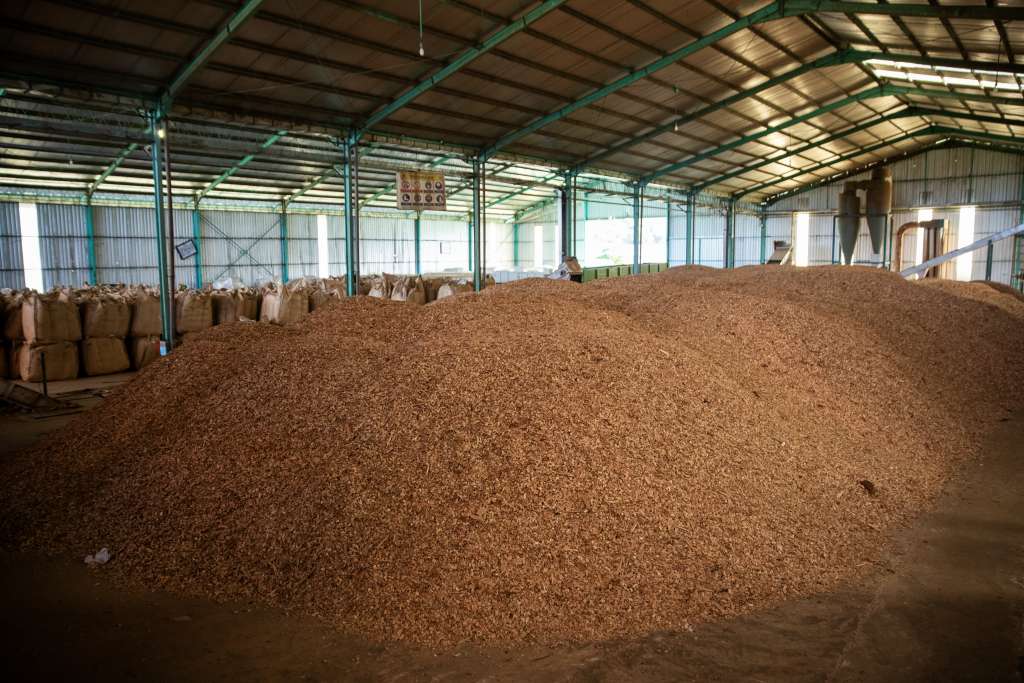
There is no Processing Industry
Co-firing implementation is not being carried out or seriously considered. The development of the industry is instead boastfully claimed to be built in 2023. The development of a primary wood processing industry is needed to convert wood, sawdust, and wood chips into wood pellets. In reality, there are about 16 co-firing power plants in Java, and the industry development will only be done in 3 locations, which are Pelabuhan Ratu, Rembang, and Brumbung.
Ideally, for industries which have already been established to produce wood pellet, the wood processing industry would be built integrated with plantations or forests, or with wood processing industries that directly produce sawdust and wood chips. Meanwhile, PLN, which is promoting co-firing with biomass, does not have land as a resource for raw materials. With the industry being built far from the raw material sources, it is then projected that the processing industry will have problems in meeting the future supply of wood pellets, such as issues with transportation, time, and costs.
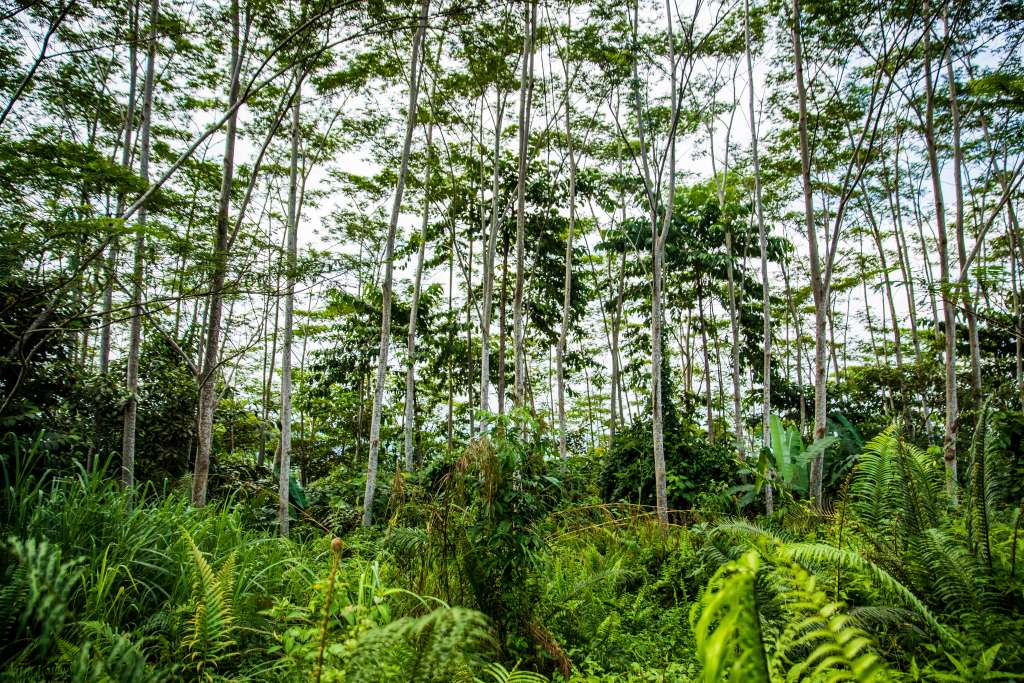
Mistake in Choosing Agent
In the PLN RUPTL document, it is planned that to meet the co-firing needs at power plants with a share of 5 to 10 percent biomass, at least 8 to 14 million tons of wood pellets is required annually. PLN plans to fulfill this need from the production of Energy Plantations (HTE). HTE is a problematic solution because it is only a transformed version of Industrial Plantations (HTI), which has a problematic history with natural forests and Indonesian communities/indigenous peoples.
Firstly, to build HTE, companies conduct land clearing by deforesting natural forests. FWI notes that the planned deforestation for HTE development could reach up to 420,000 hectares.
Secondly, out of the 31 HTE permits granted by the Ministry of Environment and Forestry (KLHK) to 31 companies, the data of FWI shows that 8 of these permits have been revoked. These include PT. Bara Indoco, PT. Bio Energy Indoco, PT. Gambaru Selaras Alam, PT. Aceh Nusa Indrapuri, PT. Bangkanesia, PT. Bhatara Alam Lestari, PT. Nityasa Idola, and PT. Wono Indo Niaga. Additionally, 3 other permits are under evaluation by KLHK, including PT. Usaha Tani Lestari, PT. Ciptamas Bumi Subur, and PT. E Greendo. The revoked and evaluated permits are problematic because they failed to commit to business operations, did not carry out their business as planned, or the companies have ceased to operate. The screening and check-and-balance process for HTE permit allocation, which did not consider various aspects, has led to operational failures at the site level. Abandoned worker camps, lack of nurseries, and unrealized planting reflect the portrait of land banking issues in this HTE business.
Thirdly, for established HTEs which have been building their industries integrated with their concessions, such as in Gorontalo, the planned production of wood pellets is intended to meet export market demands, primarily targeting Europe, like the Netherlands. It is not intended for co-firing power plants, such as the Anggrek power plant in Gorontalo. In other provinces, such as Jambi, companies involved in Foreign Direct Investment (FDI) produce biomass to meet the needs of the investor’s home country, namely South Korea, rather than for Indonesia or PLN.
Biomass as a New Driver for Deforestation in Indonesia
Biomass, especially from palm kernel and wood, will drive deforestation through the clearing of forests and new land in Indonesia. Biomass, being used as a raw material for electricity generation, is a new business primarily for industry players in Indonesia whose bases are forests, land, and plantations. Therefore, this business will not alter existing business preferences or change the supply chain of commodities.
This business will actually open up new forests and lands to meet both domestic and export market demands. For example, considering that the area of plantations under HTI concessions granted to companies ranges from 30 to 50 percent, this amount of land is primarily used only for meeting the demand in paper pulp and woodworking markets. Therefore, to meet biomass needs, new land is required to establish energy plantations. It is projected that deforestation from the wood biomass business could reach 4.65 million hectares with the implementation of the multi-use energy plantation policy. This number is calculated based on the accessibility of forest utilization permits (PBPH) and Social Forestry (PS) to co-firing power plant locations in Indonesia.
Biomass is Sharpening the Disparities in Forest and Land Ownership
The new demand for biomass commodities can be said to be quite high, especially for export markets. The push for biomass as a renewable energy source in national energy policies, combined with eased forestry sector regulations, has led to the issuance of new permits for energy plantations. Up until today, the biomass business is operated by corporations affiliated with large groups, including some Foreign Direct Investment (FDI) entities. The issuance of new permits for developing the biomass business may come from:
(1) Activation of permits in areas of former Forest Concession Rights (HPH). According to FWI (2024), the areas based on permits from the period of 1998 to 2005, which are no longer active (referred to as Ex HPH) and those which have not yet been assigned new permits, can cover up to 35.8 million hectares across Indonesia. We investigated this issue in Gorontalo Province, where new permits are emerging from Ex HPH areas. Currently, there are at least 6 new permits set to be issued, committed to developing energy plantations. These include PT. Hutani Cipta, PT Keia Lestari Indonesia 1, PT Lumintu Ageng Joyo, PT Keia Lestari Indonesia 2, PT Nawa Waskita Utama, and PT Sorbu Argo Energi. All these permits are for HTE (Energy Plantations) assigned over production forest and limited production forest areas in the districts of Boalemo, Pohuwato, and North Gorontalo, with a total area of approximately 180,600 hectares.
(2) Permits granted directly from the utilization directives for production forests by KLHK. FWI (2024) notes that the area targeted for new permits based on the 2021 Minister of Environment and Forestry’s directives reaches 13,594,912 hectares. Of this, 1,376,746 hectares are designated for the utilization of timber forest plantations (HHK-HT) or HTI and HTE.
(3) Permits originating from the release of forest areas for oil palm plantations (Ex Oil Palm Plantations) by KLHK. FWI (2024) records that, as of compiled data up to 2021, KLHK has released a total of 5.9 million hectares of forest area, where 5.5 million hectares of them is designated for oil palm plantations.

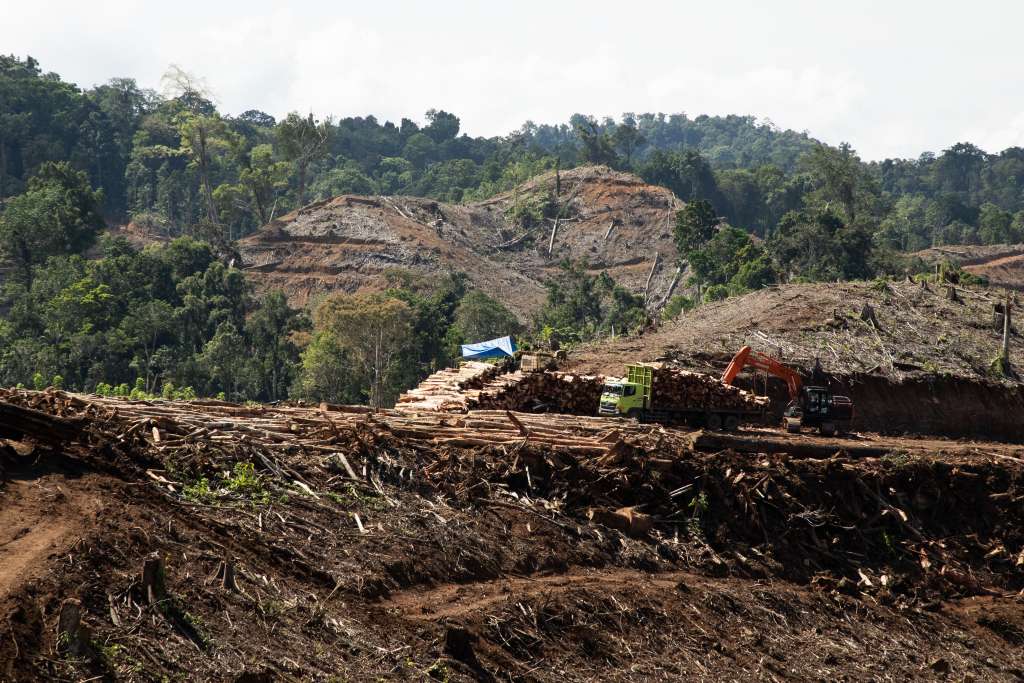
We investigated this issue in Gorontalo. There has been a transformation of oil palm plantation permits that received amnesty from KLHK. In 2020, KLHK issued permits in the form of forest utilization rights for two former oil palm plantation companies in Gorontalo, which are the PT Banyan Tumbuh Lestari (BTL) and PT Inti Global Laksana (IGL), with areas of 15,493.42 hectares and 11,860.10 hectares, respectively. These companies utilize natural forest wood through land clearing or deforestation within their concessions to supply raw materials for wood pellets at PT Biomassa Jaya Abadi (BJA). Both companies are committed to deforesting natural forests to meet the production needs of PT BJA for wood pellet exports to South Korea and Japan through Hanwa co. In South Korea and Japan, wood pellet biomass is claimed to be a renewable energy source because it is considered carbon neutral. However, this claim is misleading as it actually originates from deforestation of natural forests.
The issuance of new permits for biomass utilization will only prolong the agrarian conflicts and the control of forest and land by corporations. Permits will be granted exclusively to corporations, thereby expanding the areas controlled by these corporations and shrinking the living space for local communities and indigenous peoples.
Emission Debt
The utilization of biomass through burning, sourced from the development of energy plantations (HTE), will only create an emission debt. This is because the biomass produced comes from the destruction of natural forests, which are among the most carbon-rich ecosystems compared to plantations. It is known that 1 hectare of natural forest can store 254 tons of carbon. Meanwhile, a plantation forest can store only 107.86 tons of carbon per hectare. This means that converting 1 hectare of natural forest into a plantation through land clearing will only result in an emission debt of 146.14 tons of carbon per hectare. Additionally, emissions from burning biomass in power plants contribute further to this debt. The Biomass Action Network warns about the various impacts of using forest biomass for energy. Emissions from biomass power plants are estimated to be equivalent to those from coal-fired power plants, meaning that biomass cannot be classified as carbon neutral. Moreover, if emissions from chemical fertilizer use and large-scale deforestation are considered, or if upstream and downstream emissions are not separated between the energy and forest land sectors, the overall impact is even greater.
The massive utilization of biomass, which claimed to be a renewable energy source, will trigger large-scale conversion of forests and land. Biomass projects will only exacerbate land ownership inequalities in Indonesia and encourage planned deforestation under the guise of green renewal. Actors from companies that have long operated in forestry, agriculture, and mining will leverage various permit facilitation schemes to participate in the biomass business.
Indonesia, as home to one of the largest tropical rainforests in the world, has long struggled against deforestation. The emergence of the revised energy policies promoting biomass as a renewable energy source raises concerns about the acceleration of deforestation. As such, this is a misguided step that will only distance Indonesia from achieving its energy mix targets and its emission reduction goals for the forest and other land use (FoLU) and the energy sectors.
Anggi Prayoga
Secretariat of Forest Watch Indonesia
Sempur Kaler Street No. 62, Sempur Regency, Bogor City, Indonesia
Whatsapp: (+62 857-2034-6154)



